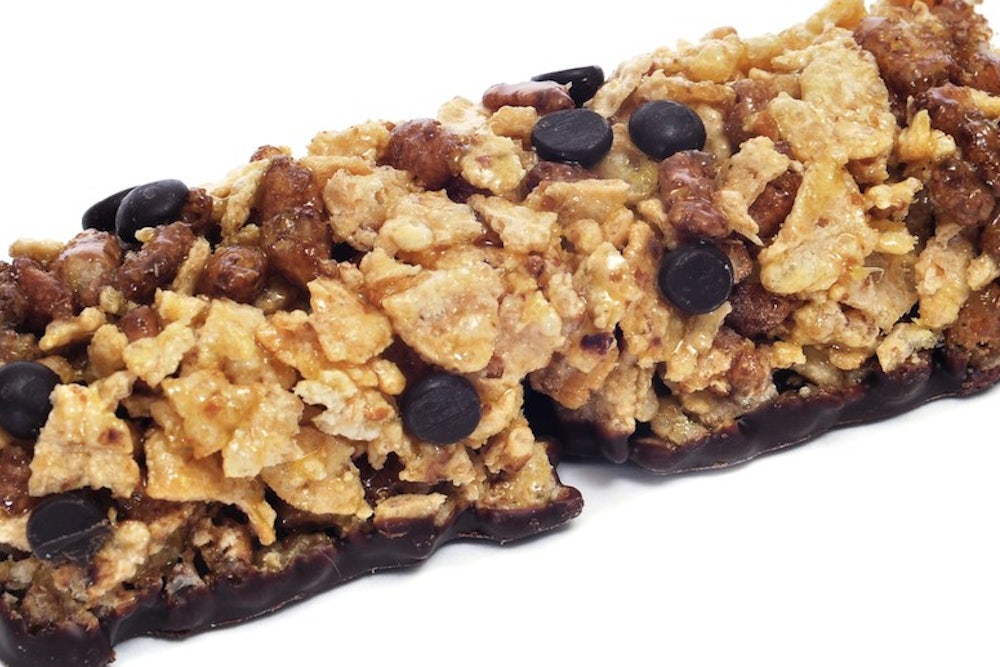It’s been nearly a hundred years since psychologists started talking about the “halo effect”: a cognitive bias whereby we assume that if a person has one positive attribute, they must have others. We infer that attractive people, for example, are also trustworthy, intelligent, and kind. Much of the research on the halo effect focused on how perception of attractiveness impacted perception of other traits, but psychologists are still finding new manifestations of the halo effect; the latest research focuses on how it affects our judgments about food. If an item is labeled “low-fat” or “low-sodium,” for instance, we assume it has fewer calories.
For a new paper in the Journal of Public Policy and Marketing, a team of researchers led by John Pedoza, an associate professor of marketing at the University of Kentucky, found that we assume that food made by a socially conscious company is also healthy. Pedoza and colleagues asked 144 students to evaluate a new brand of granola bar after reading a fictitious newspaper article about the company behind the product. Half the participants read an article describing a company that had won awards for its corporate social responsibility; the other half read about a company whose charitable activities were more modest. (This company had only recently begun donating to a charity.) The newspaper articles also portrayed the companies as having either selfish or altruistic motives for their charitable activities: “selfish” managers admitted that they were hoping their philanthropy would enhance their company’s reputation; “altruistic” managers were motivated primarily by a desire to help the community.
After reading the articles, the students were shown a fact sheet about the granola bars, with details on proposed flavors, launch date, and suggested price, but nothing on nutrition. Then they had to indicate—on a scale of 1 to 7—how much they agreed with statements like, “I expect this product will contain few preservatives," “I expect this product will be made with natural ingredients,” and “I expect this product will be very healthy.” They also ranked their expectations of its “deliciousness” on a 7-point scale.
As Pedoza expected, students assumed that the more socially responsible companies were also producing a healthier snack food: The average composite score of the granola bar produced by these companies was 4.58, compared to 3.9 for the less socially responsible brand. And among the companies seen as socially responsible, perceived motivations made a difference, too: The students gave the granola bar from the more altruistic company the highest rating of all: 5.03.
It’s not all good news for corporate do-gooders, though: The presumably healthy granola bar also suffered from a sort of inverse-halo effect—the assumption that healthier foods don’t taste as good. The bar produced by the selfish, uncharitable company was perceived as the most delicious—5.04 out of 7; the one by the altruistic, charitable company received the lowest score, 4.12.
Another “health halo” has been documented for products made with organic ingredients. There’s plenty of confusion over what exactly “organic” means—and whether organic food is healthier at all—but one claim that no one has made is that organic food is lower in calories. Yet in a 2010 paper ominously titled “The ‘Organic’ Path to Obesity?” University of Michigan psychologists Jonathan Schuldt and Norbert Schwarz found that people believe Oreos made with organic flour are lower in calories, relative to other cookies, than regular Oreos—even when they’re shown that both cookies have identical calorie content.
Schuldt and Schwarz recruited 114 students, and broke them into two groups. Half were assigned to read a nutrition label for conventional Oreos, and half read a nutrition label for Oreos “made with organic flour and sugar”; the nutrition facts—including calorie content—were identical (160 calories per two-cookie serving). The students then had to try to compare the caloric content of the Oreos they read about with other brands of cookies: “Compared to other cookie brands,” they were asked, “do you think that one serving of these [organic] Oreo cookies contains fewer calories or more calories?; One = fewer calories, Seven = More calories.” The students judging the Oreos made with organic ingredients assumed they were lower in calories than other cookies: Their average score on the 7-point calorie comparison scale was 3.94, compared with 5.17 for the regular Oreos. Schuldt and Schwarz also collected information on the students’ attitudes toward various political and ideological issues—and found that the difference in calorie estimation was particularly stark among students who were more concerned about the environment. That makes at least one case where the halo effect doesn’t apply: Caring about the environment is a positive trait, but being biased by irrelevant information is not.
